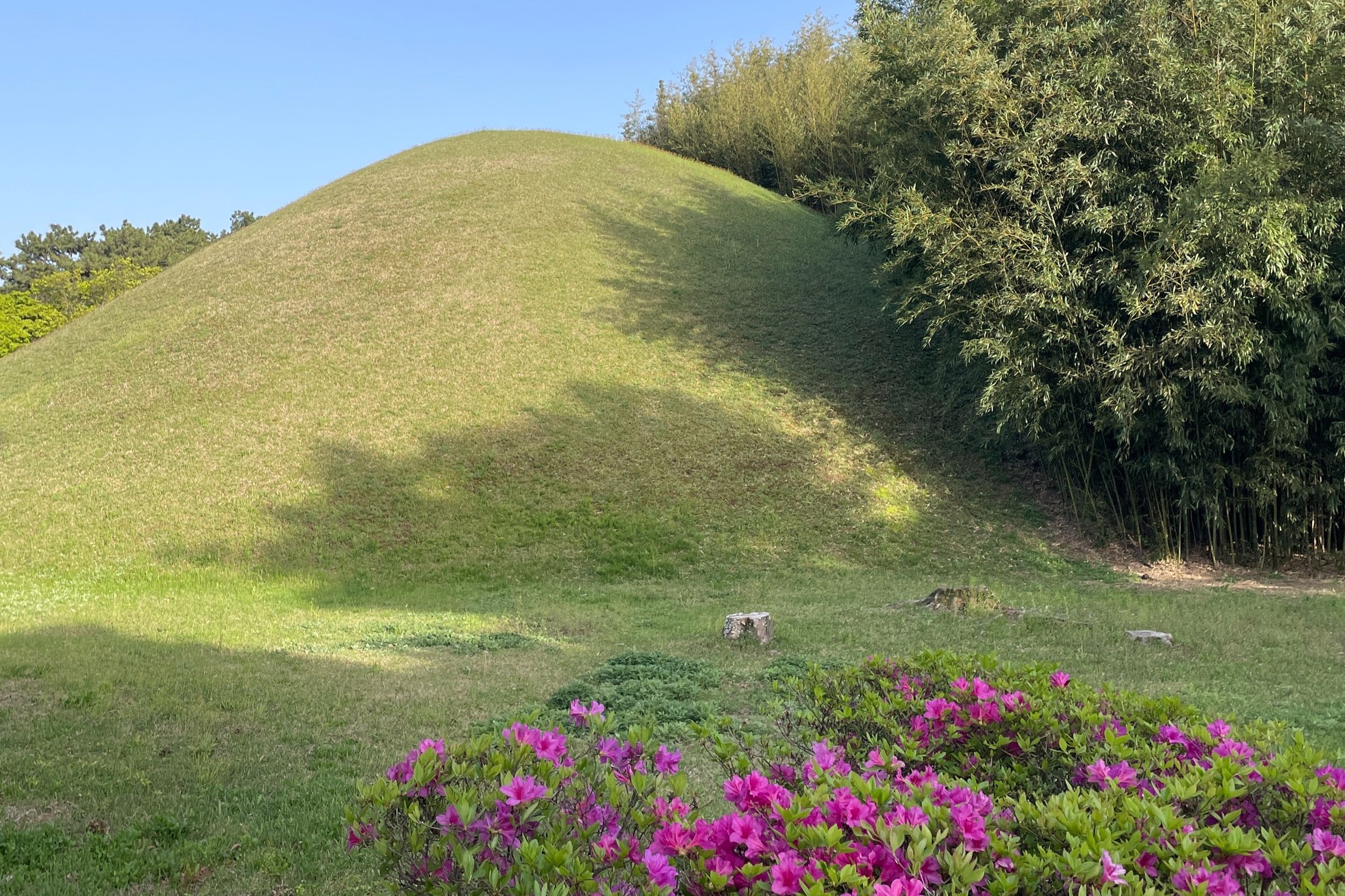How we spent two days in Gyeongju
We were deciding between a few smaller towns to visit and settled on Gyeongju based on its historical significance. Gyeongju used to be the capital of Korea, and is known as the museum without walls. It’s home to ancient tombs, ponds, bridges, and the oldest observatory in Asia.
Gyeongju is quiet and has a traditional feel, with lots of lights and one- or two-storey buildings. It’s surrounded by more urban areas, but the old town is peaceful and doesn’t feel too touristy. And it’s only about 2 hours from Seoul on the KTX.
We spent one full day and two nights here at the adorable DoranDoran Guesthouse. These were our highlights.
Daereungwon Tomb Complex
Also known as Tumuli Park, these grounds are the site of numerous ancient tombs for Korean royals. They date back to the 5th-6th centuries and are the iconic green mounds you’ve probably seen in photos of Gyeongju. Daereungwon is free to enter, and has well maintained paths that you can follow around the tombs. It’s a popular place for couples to take a walk and there are plenty of great photo spots – Koreans love to take a photo!
You can enter the main tomb, Cheonmachong, for 3,000 won per person (about £1.75). Inside is the real burial site of the Silla royal family including the actual stone wall and some of the jewels and gold that was found inside. It’s open until 10pm, but the mounds are best seen during daylight.
Donggung Palace & Wolji Pond
From the town of Gyeongju you can easily walk around the Dongbu Historic Area, and most of it’s free to enter. The park is full of the tomb mounds that date back to the Silla dynasty as well as the Cheomseongdae Observatory which is thought to be the oldest in Asia.
The one site here that you have to pay to enter is the Wolji Pond on the grounds of the ancient Donggung Palace. We went in the evening when the light reflects beautifully off the water but it would be just as pretty in the day or even at sunset when you can see the details of the pond and rebuilt palace buildings in the light.
We spent about 30 minutes here and it was 3,000 won (£1.75) per person to enter.
Woljeonggyo Bridge
West of Donggung Palace is the beautiful Woljeonggyo Bridge, which looks and feels more like a temple than a river crossing. This is another spot that people recommend visiting at night because the lights reflect across the water. But it would be just as impressive at any time of day. Just downstream from the bridge are stepping stones that you can cross, where you’ll get a perfect view of the middle of the bridge.
Bulguksa Temple and Seokguram Grotto
An easy 20-30 minute bus ride from Gyeongju is a historic temple that dates back to the 750s. The woodland setting, traditional architecture, and active Buddhist shrines make Bulguksa Temple a great place to immerse yourself in the history of Korea.
It feels charming and traditional without being fake as some of the modern culture villages do. And if you’re there in spring, there is a garden of cherry trees – many of the trees were in full bloom during our visit in mid-April and it was much quieter than some of the most popular, touristy cherry blossom spots.
When we visited, entry was free (although we had read that it would cost 6,000 won per person) and we spent about 45 minutes. Although you could spend much longer, or do it in as little as 30 minutes if you don’t have much time.
Seokguram Grotto
This grotto is home to a huge Buddha statue, where photography is banned. The Buddha is behind a glass panel and it takes about 10 seconds to pass through the grotto itself. But the grounds are pretty and there’s an easy 10 minute walk through light woodland to reach it from the car park.
Bulguksa Temple is definitely the main event here, but if you have an hour to kill it’s worth getting the 20-minute bus up the mountain to see the grotto. Like the temple, entrance was free during our visit but we had read that it should cost 6,000 won per person. The bus costs 1,700 won per person (less than £1) and is easy to catch from either of the two temple car parks.
There is a 2.2km hike between the temple and the grotto which we would have liked to do, but it was closed due to flooding in the middle when we were there.
Find out more about our two week South Korea itinerary here.





